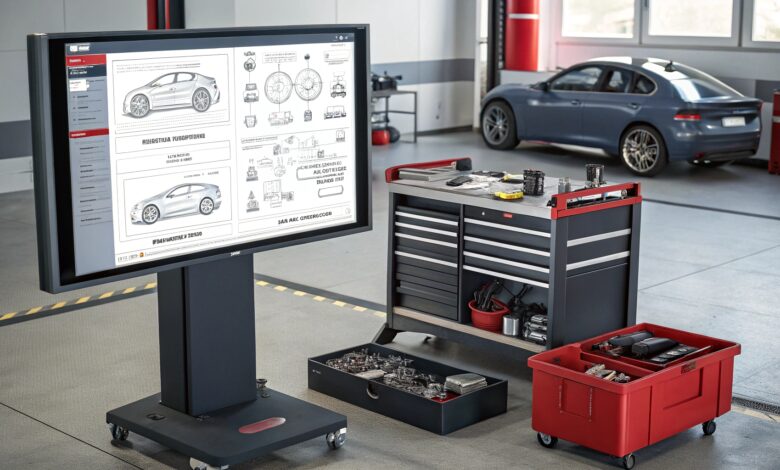Year/Model Interchange List: Your Ultimate Compatibility Guide

Year/Model Interchange List: Your Ultimate Compatibility Guide helps you understand how vehicle parts match across different years and models. Learn how to identify compatible components for your car without guesswork. Explore detailed interchange methods that save time and money on repairs. Understand how professional mechanics use interchange data to boost accuracy. Discover how VIN decoding and OEM references enhance compatibility checks. Master the art of finding interchangeable car parts confidently and efficiently.
Stay tuned with us we will talk about Year/Model Interchange List: Your Ultimate Compatibility Guide.
Understanding the Year/Model Interchange List
The year/model interchange list is a crucial tool used by automotive professionals and enthusiasts to identify which vehicle parts are interchangeable across different makes, models, and production years. It simplifies the process of finding compatible components without relying solely on trial and error.
This list helps ensure that when you buy a part—whether it’s a bumper, transmission, or alternator—it fits and functions perfectly. It is the foundation for efficiency in auto repairs, salvage yards, and restoration projects.
Why the Interchange List Matters for Vehicle Repairs
Without a reliable interchange list, mechanics would spend excessive time guessing which parts fit which vehicles. By consulting the list, they can easily determine cross-compatible parts and save both time and money.
A well-documented interchange list also helps prevent installation errors, ensuring that safety and performance standards are maintained.
How Interchange Lists Are Created
OEM Data Integration
Manufacturers release part compatibility data through Original Equipment Manufacturer (OEM) systems. These databases record every part’s serial, function, and fitment range.
Aftermarket Research
Third-party systems like Hollander or NAPA cross-reference this OEM data and create accessible interchange lists used across the auto industry.
Validation Testing
Compatibility isn’t theoretical—it’s tested. Engineers and technicians validate these lists by verifying part performance and physical dimensions on multiple models.
Benefits of Using a Year/Model Interchange List
Here’s why professionals depend on it daily:
- Saves money by identifying interchangeable parts from older or salvaged vehicles.
- Saves time by reducing research and installation errors.
- Ensures reliability through tested compatibility data.
- Boosts sustainability by promoting reuse and recycling of existing parts.
- Improves resale accuracy for auto dismantlers and repair shops.
How to Read and Use an Interchange List
Understanding how to interpret these lists ensures you make precise selections:
| Field | Description | Example |
| Part Name | The component you’re identifying | Alternator |
| OEM Number | Original part code from manufacturer | 06A 903 018 DX |
| Interchange Code | Indicates cross-compatible versions | 301-1771 |
| Model Range | Vehicle makes/models using that part | VW Golf 2002–2008, Audi A3 2003–2009 |
| Notes | Special requirements or variations | Manual transmission only |
Use this information alongside VIN data to confirm fitment before purchasing or installing any part.
Role of VIN Numbers in Interchange Lists
What VIN Data Reveals
The Vehicle Identification Number (VIN) serves as your car’s DNA. It reveals manufacturer details, year of production, engine type, and body configuration.
VIN + Interchange = Precision
When used with an interchange list, the VIN ensures pinpoint accuracy—especially when variations exist within the same model year. For example, mid-year redesigns can alter mounting points, sensors, or software compatibility.
Interchange Lists in Modern Digital Platforms
Today’s repair systems have integrated interchange databases into online catalogs and apps. You can enter your VIN or part number into a digital platform, and it instantly displays compatible replacements across years and models.
Digital interchange tools also sync with e-commerce systems, helping buyers find affordable and verified parts within seconds.
Common Mistakes to Avoid When Using Interchange Lists
Even the best tools require careful use. Here are common mistakes to steer clear of:
- Ignoring sub-model variations (e.g., “Sport” or “Limited” trims).
- Overlooking transmission or drivetrain differences.
- Relying on visual similarity rather than verified data.
- Forgetting to compare sensor or wiring configurations.
- Failing to confirm part numbers when ordering online.
These errors can lead to wasted time and costly returns.
Practical Example: Using Interchange Data Effectively
Imagine you own a 2010 Ford F-150 and need a replacement door handle. The interchange list may show compatibility with models from 2009 to 2014. Instead of buying a brand-new handle, you can source one from a salvaged 2012 model—saving money without compromising fit or finish.
Professionals use this approach daily to maintain vehicles efficiently, extending their life cycles and reducing waste.
Conclusion
The year/model interchange list is more than a reference—it’s a vital roadmap for the automotive world. It bridges the gap between engineering design and real-world maintenance. By understanding how parts interchange across years and models, mechanics and DIYers can save money, improve efficiency, and reduce waste. Digital tools now make this process faster and more accurate than ever before. For anyone in auto repair, restoration, or resale, mastering interchange data means better decisions and smoother workflows. Whether you’re fixing a classic or maintaining a modern car, the interchange list ensures every part fits perfectly and performs as intended.
FAQs
What is a year/model interchange list?
It’s a database that identifies which vehicle parts are compatible across different makes, models, and years.
Why is an interchange list important?
It helps save time and money by showing verified part compatibility before purchase or installation.
How do I access an interchange list?
Many automotive databases and digital platforms provide interchange information based on VIN or OEM part numbers.
Can interchange lists help with classic car restoration?
Yes, they are essential for finding compatible vintage parts and replacements.
Are digital interchange lists reliable?
Yes, modern systems use verified OEM data and cross-referenced compatibility testing for accuracy.



